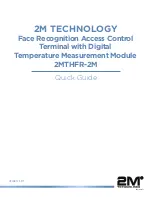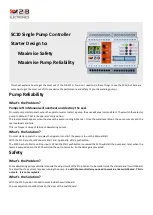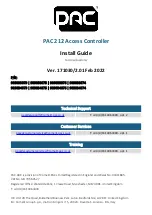
Features
•
High Performance, Low Power AVR
®
8-Bit Microcontroller
•
Advanced RISC Architecture
– 120 Powerful Instructions – Most Single Clock Cycle Execution
– 32 x 8 General Purpose Working Registers
– Fully Static Operation
– Up to 20 MIPS Througput at 20 MHz
•
High Endurance Non-volatile Memory segments
– 1K Bytes of In-System Self-programmable Flash program memory
– 64 Bytes EEPROM
– 64 Bytes Internal SRAM
– Write/Erase Cycles: 10,000 Flash/100,000 EEPROM
– Data retention: 20 Years at 85°C/100 Years at 25°C (see
)
– Programming Lock for Self-Programming Flash & EEPROM Data Security
•
Peripheral Features
– One 8-bit Timer/Counter with Prescaler and Two PWM Channels
– 4-channel, 10-bit ADC with Internal Voltage Reference
– Programmable Watchdog Timer with Separate On-chip Oscillator
– On-chip Analog Comparator
•
Special Microcontroller Features
– debugWIRE On-chip Debug System
– In-System Programmable via SPI Port
– External and Internal Interrupt Sources
– Low Power Idle, ADC Noise Reduction, and Power-down Modes
– Enhanced Power-on Reset Circuit
– Programmable Brown-out Detection Circuit with Software Disable Function
– Internal Calibrated Oscillator
•
I/O and Packages
– 8-pin PDIP/SOIC: Six Programmable I/O Lines
– 10-pad MLF: Six Programmable I/O Lines
– 20-pad MLF: Six Programmable I/O Lines
•
Operating Voltage:
– 1.8 – 5.5V
•
Speed Grade:
– 0 – 4 MHz @ 1.8 – 5.5V
– 0 – 10 MHz @ 2.7 – 5.5V
– 0 – 20 MHz @ 4.5 – 5.5V
•
Industrial Temperature Range
•
Low Power Consumption
– Active Mode:
• 190 µA at 1.8 V and 1 MHz
– Idle Mode:
• 24 µA at 1.8 V and 1 MHz
8-bit
Microcontroller
with 1K Bytes
In-System
Programmable
Flash
ATtiny13A
Rev. 8126F–AVR–05/12


































